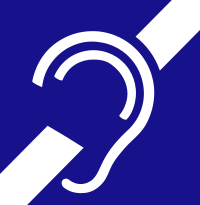
Photo from wikipedia
Noise trauma-induced loss of ribbon synapses at the inner hair cells (IHC) of the cochlea may lead to hearing loss (HL), resulting in tinnitus. We are convinced that a successful… Click to show full abstract
Noise trauma-induced loss of ribbon synapses at the inner hair cells (IHC) of the cochlea may lead to hearing loss (HL), resulting in tinnitus. We are convinced that a successful and sustainable therapy of tinnitus has to treat both symptom and cause. One of these causes may be the mentioned loss of ribbon synapses at the IHC of the cochlea. In this study, we investigated the possible preventive and curative effects of the Ginkgo biloba extract EGb 761® on noise-induced synaptopathy, HL, and tinnitus development in Mongolian gerbils (Meriones unguiculatus). To this end, 37 male animals received EGb 761® or placebo orally 3 weeks before (16 animals) or after (21 animals) a monaural acoustic noise trauma (2 kHz, 115 dB SPL, 75 min). Animals’ hearing thresholds were determined by auditory brainstem response (ABR) audiometry. A possible tinnitus percept was assessed by the gap prepulse inhibition acoustic startle reflex (GPIAS) response paradigm. Synaptopathy was quantified by cochlear immunofluorescence histology, counting the ribbon synapses of 15 IHCs at 11 different cochlear frequency locations per ear. We found a clear preventive effect of EGb 761® on ribbon synapse numbers with the surprising result of a significant increase in synaptic innervation on the trauma side relative to placebo-treated animals. Consequently, animals treated with EGb 761® before noise trauma did not develop a significant HL and were also less affected by tinnitus compared to placebo-treated animals. On the other hand, we did not see a curative effect (EGb 761® treatment after noise trauma) of the extract on ribbon synapse numbers and, consequently, a significant HL and no difference in tinnitus development compared to the placebo-treated animals. Taken together, EGb 761® prevented noise-induced HL and tinnitus by protecting from noise trauma-induced cochlear ribbon synapse loss; however, in our model, it did not restore lost ribbon synapses.
Journal Title: Nutrients
Year Published: 2022
Link to full text (if available)
Share on Social Media: Sign Up to like & get
recommendations!